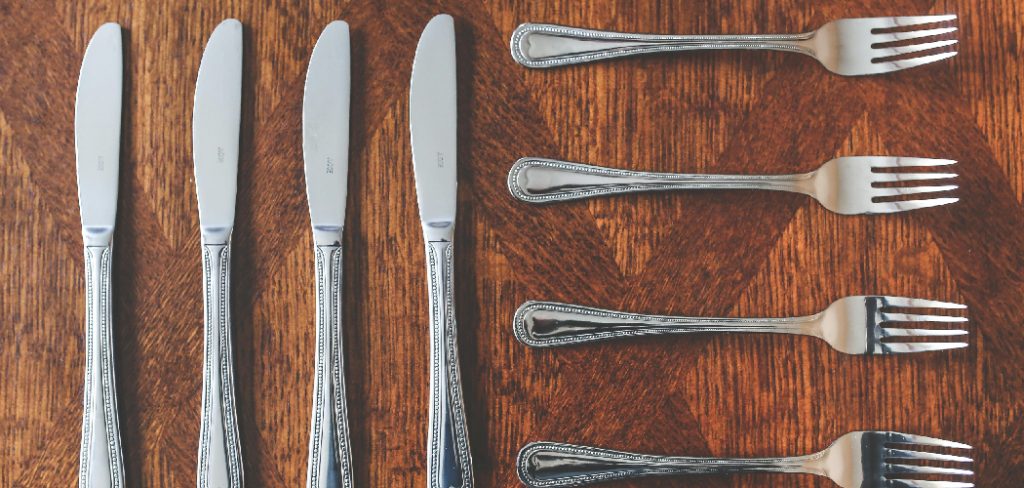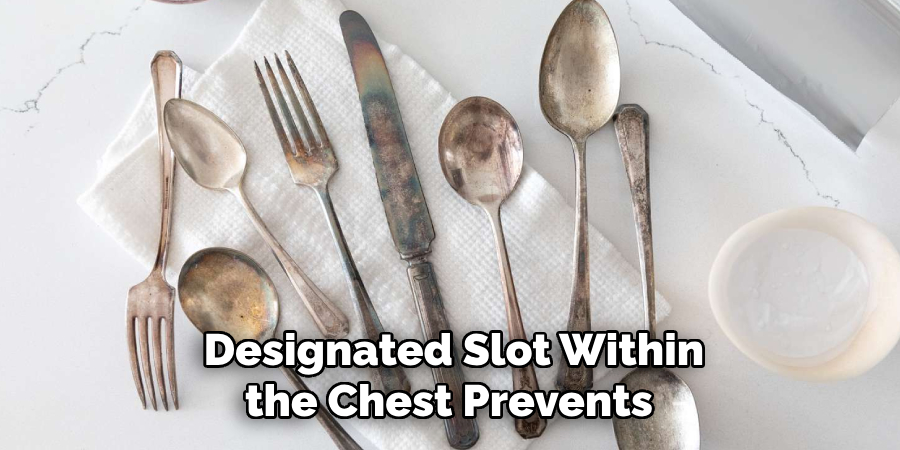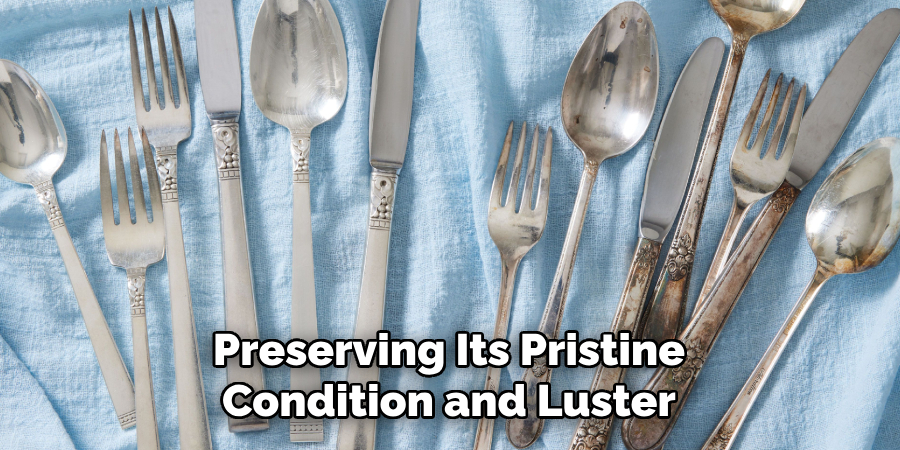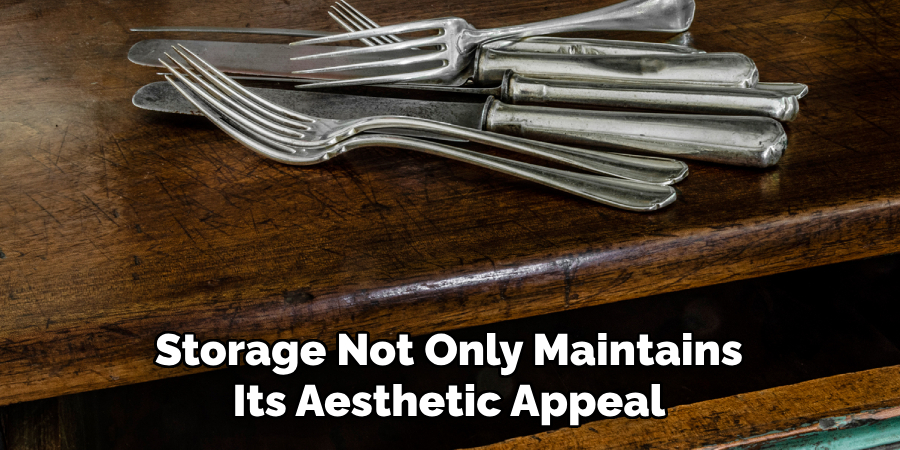Proper storage of silver flatware is crucial to preserving its elegance and ensuring its longevity. Silver is a delicate material that is prone to tarnish, scratches, and other forms of damage when exposed to air and moisture. This oxidation process can quickly dull the intricate shine and beauty that characterize silver utensils. Therefore, learning how to store silver flatware effectively is vital for anyone who wishes to maintain its exquisite appearance.

This article provides practical methods and tips on how to store silver flatware, focusing on techniques that protect against tarnish and physical damage. By implementing these strategies, you can enjoy the timeless allure of your silver flatware for many generations. Whether you are preparing for a special occasion or wish to display your silver at its best, understanding these storage techniques is the key to preserving both the look and value of your cherished cutlery.
Why Proper Storage is Essential
Preventing Tarnish
Silver flatware is highly susceptible to tarnishing, a chemical reaction caused by exposure to air and moisture. This tarnish not only dulls the luster of silver but can also obscure its delicate patterns over time. To combat this, selecting appropriate storage techniques is critical. Utilizing storage solutions like anti-tarnish cloths or sealed containers can significantly minimize silver’s exposure to the elements, thereby preserving its brilliant shine and extending its lifespan.
Avoiding Scratches and Damage
Inadequate storage can lead to unwanted scratches or more severe damage to your silver flatware. When flatware is stacked carelessly or stored without proper protection, the risk of physical harm increases. To mitigate this issue, it’s advisable to use soft and protective storage materials. Options such as individual compartments, felt-lined rolls, or designated slots in a flatware chest keep the pieces organized and safeguard against physical abrasions, ensuring the timeless elegance of your silver.

Preparing Silver Flatware for Storage
Cleaning the Flatware
Proper cleaning is the first step to preparing silver flatware for storage. Start by washing each piece with mild soap and warm water to effectively remove any food residues or oils. This process helps to eliminate anything that might contribute to tarnish over time. After washing, it is crucial to dry the flatware thoroughly with a soft, lint-free cloth. The importance of drying cannot be overstated, as any remaining moisture can accelerate tarnish formation, affecting the flatware’s luster and long-term appearance.
Polishing the Silver
Once clean, polishing the silver flatware is essential to restore its natural shine and prepare it for storage. Use a silver polish specifically designed for delicate items or a paste that is tailored for silver. Polish carefully, following the manufacturer’s instructions to achieve the best results. It is important to avoid abrasive cleaners or harsh scrubbing, as these can scratch the surface, compromising its beauty. By maintaining a regular polishing routine, the silver will look its best and remain protected against potential tarnish in the future.
How to Store Silver Flatware: Choosing the Right Storage Methods
Silver Flatware Rolls
Silver flatware rolls offer a practical and efficient solution for safe storage. These rolls are made from felt or similar fabrics designed for silver items, featuring anti-tarnish properties that help protect against oxidation. To maximize their effectiveness, roll each piece of flatware individually, ensuring the utensils do not come into contact. This prevents scratches and minimizes exposure to environmental elements. Flatware rolls are compact, making them easy to store in drawers or cabinets while maintaining the organization and condition of your cherished silver items.
Anti-Tarnish Cloth or Bags

Using anti-tarnish cloth pouches or bags is another excellent method to protect silver flatware from tarnishing. These storage solutions are infused with materials that help neutralize harmful elements in the air, reducing the risk of tarnish. When selecting cloth pouches, ensure that they are moisture-resistant to provide additional protection against humidity, which can accelerate tarnish formation. By enclosing each piece of flatware in these bags, you effectively limit exposure to air and environmental contaminants, thus preserving the flatware’s elegance and shine over a longer period.
Flatware Chests or Boxes
Opting for flatware chests or boxes offers both functional and aesthetic benefits for silver storage. These containers, often wooden or lined with anti-tarnish fabric, are crafted specifically to accommodate the unique needs of silver flatware. Placing each piece in its designated slot within the chest prevents unnecessary movement that could lead to scratches or other damage.
Furthermore, the protective lining of these chests helps mitigate tarnish by limiting exposure to air. Some boxes also come with additional features, such as lockable lids, which provide a secure environment against environmental factors and potential mishandling. Chests and boxes protect your silver’s physical and visual appeal and present an elegant storage solution that complements your home’s decor when displayed.
Airtight Plastic Containers
Storing silver flatware in airtight plastic containers equipped with anti-tarnish strips provides an economical option to limit air and humidity exposure. The sealed environment within these containers helps prevent tarnishing while maintaining the flatware’s pristine appearance. This method is particularly useful for those seeking a straightforward and compact storage solution.

Environmental Considerations for Storage
Controlling Humidity
Maintaining an optimal humidity level is crucial when storing silver flatware to prevent tarnish. High humidity accelerates the chemical reactions that cause tarnishing. To control moisture, place silica gel packs or anti-tarnish strips in your storage areas. These substances absorb excess moisture, creating a dry environment conducive to preserving the silver’s shine and longevity. Ensuring a consistently low-humidity storage setting helps protect your precious flatware from the adverse effects of environmental moisture.
Avoiding Harmful Materials
When storing silver flatware, avoiding materials that can contribute to tarnish or discoloration is essential. Newspaper, plastic wrap, and rubber bands are particularly harmful, as they contain substances and chemicals that react negatively with silver. These reactions lead to discoloration or accelerate tarnishing over time. Therefore, select storage solutions specifically designed for silver, such as anti-tarnish cloths or sealed containers, to ensure your flatware maintains its beauty and integrity.
Tips for Long-Term Storage
Periodic Maintenance
Regularly check stored silver flatware to ensure it remains free from tarnish and damage. Inspect each piece and look for any signs of discoloration or corrosion. If tarnish is present, a gentle re-polishing using a silver-specific polish can help restore its brilliance. Cleaning the flatware periodically also ensures that any unintended exposure to moisture or contaminants is addressed promptly, preserving its pristine condition and luster.
Rotating Usage
Incorporating your silver flatware into your regular dining routine can prevent the adverse effects of long-term storage. Using the flatware occasionally helps discourage tarnish by keeping the silver in active utility rather than prolonged dormancy. Rotating your silver out of storage not only maintains its aesthetic appeal but also allows you to enjoy its elegance in daily life, which helps extend its longevity and reduce the likelihood of tarnish.

Common Mistakes to Avoid
Storing While Damp
Moisture promotes tarnish and can cause silver to develop spots or discoloration, impacting both its appearance and value. To avoid these issues, ensure all silver flatware is thoroughly dried before storage. Wiping each piece with a soft, dry cloth after cleaning helps eliminate any residual moisture. Additionally, consider allowing silver to air dry in a well-ventilated area before placement in storage, further safeguarding against unwanted tarnish and discoloration.
Overcrowding Storage Space
Cramped storage increases the risk of scratches and dents, which can diminish the elegance and functionality of silver flatware. To prevent damage, allocate ample space in storage areas, allowing each piece to have its own designated spot. Avoid piling or overlapping silver items; use dividers or individual pouches if necessary. By maintaining an organized, spacious storage environment, you ensure each piece remains pristine and ready for use, maximizing both its longevity and beauty.
Frequently Asked Questions
How Often Should I Polish My Silver Flatware to Prevent Tarnish?
It is generally recommended to polish your silver flatware once or twice a year, depending on how often it is used. If the flatware is frequently in use, regular washing and drying can minimize tarnish. However, for pieces stored long-term, occasional polishing with a high-quality, silver-specific polish can help maintain their shine and prevent tarnishing.
Can I Store Silver Flatware with Other Types of Metals?
It is best to store silver flatware separately from other types of metals to prevent chemical reactions that may lead to tarnishing or corrosion. Proper storage solutions, such as using anti-tarnish cloths or lined chests, ensure that silver remains protected from reactive elements often present in other metals.
What Is the Safest Way to Clean Silver Flatware Before Storage?
To safely clean silver flatware before storage, use a mild detergent and warm water to wash each piece, ensuring any food residue is removed. After washing, rinse thoroughly with clean water and dry immediately with a soft, lint-free cloth to eliminate moisture that could cause tarnish. Avoid using abrasive materials or harsh chemicals that might damage the silver’s surface.
Conclusion
In summary, understanding how to store silver flatware properly is crucial to maintaining its longevity and shine. The key steps include thorough cleaning to remove tarnish, selecting protective storage solutions like anti-tarnish cloth pouches or chests, and controlling environmental factors such as humidity. Regular maintenance and careful handling are vital to preserving your flatware’s quality over time. By implementing these tips and making them part of your routine, you can ensure that your silver flatware remains a treasured part of your dining experience for generations to come, continuing its legacy and elegance in your household.
Edmund Sumlin is a skilled author for Metal Fixes, bringing 6 years of expertise in crafting a wide range of metal fixtures. With a strong background in metalwork, Edmund’s knowledge spans various types of fixtures, from decorative pieces to functional hardware, blending precision with creativity. His passion for metalworking and design has made him a trusted resource in the industry.
Professional Focus:
- Expert in Metal Fixtures : Edmund aesthetic specializes in creating durable and innovative metal fixtures, offering both appeal and functionality. His work reflects a deep understanding of metalworking techniques and materials.
- Sustainability Advocate : He is dedicated to using sustainable practices, ensuring that every fixture is crafted with eco-friendly methods while maintaining high-quality standards.
In his writing for Metal Fixes, Edmund provides valuable insights into the latest trends, techniques, and practical advice for those passionate about metal fixtures, whether they are professionals or DIY enthusiasts. His focus on combining artistry with engineering helps others discover the true potential of metal in design.


